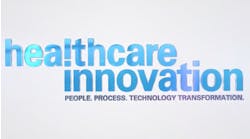Artificial intelligence (AI) has gotten a great deal of hype in healthcare circles for its clinical decision support potential, but there hasn’t been as much buzz around how the technology could be applied to other areas, such as improving patient communication and access.
This has recently become a new focus area for leaders at Boston Children’s Hospital as they believe that while patient care will see benefits from AI in the clinical setting over a long period of time, it can be also used in other aspects of an organization. For example, when implemented within patient-provider communication, AI and automation can eliminate the need for providers to ask routine questions, in turn fueling a more meaningful connection.
“As we have grown over the years, our cost, volume and the variety of tasks that families are trying to accomplish over the phone have expanded, and even if we had all the physical space that we would like to have, is hiring fleets of people to man call centers the right decision? Or is there a way to empower our staff, patients and their families with some choice?” Kevin Pawl, senior director of patient access at Boston Children’s Hospital, asks as he frames the case for using AI to improve patient-provider communication.
Pawl feels that his organization can leverage technologies such as AI, machine learning and robotic processing. He acknowledges that deploying AI in this area is not yet a core competency for Boston Children’s, nor is the hospital sophisticated in its familiarity with it, but it has done some work with automation in the patient financial services space, and has been satisfied with the results. For instance, the organization has started to automize the process of obtaining managed care authorizations and approvals for different procedures and outpatient visits. “That’s had a dramatic impact when you think of the number of different clicks, claims and repetitive tasks that the patient financial services staff are engaged in. So that will allow us to take those staff and shift them into more value-add, patient-enhancing activities,” says Pawl.
Beyond that, healthcare stakeholders are now looking at how to have better communications with patients and their families about their out-of-pocket costs as deductibles and coinsurances continue to climb. For instance, in the call center space, Boston Children’s is considering different intuitive solutions to provide a better experience when a patient calls, such as providing self-service options that will enable the hospital to expand its hours of operations beyond the traditional call center window, Pawl notes.
Pawl says that his team at Boston Children’s is “guided by the voices of patients and families. When we started looking at [technology solution] partners, we had families on our selection committee, so through our RFP process, we had families involved. A lot of hospitals that I network with across the country were shocked that we would have the families involved in these meetings,” he admits. “But we wanted to hear loud and clear from them about what it is that they want [when they’re communicating with us]. Do they prioritize speed—be it human or technology, or do they prioritize talking to someone? They get the choice.”
He adds that the feedback from families has overwhelmingly been that they wanted less, but more intuitive, communication. “So if AI is scrubbing through multiple data points while that phone call is connecting, or we send a communication out to the family beforehand, yes, that’s something we can do with humans, but it would be dramatically laborious,” Pawl contends.
He offers an example of how a typical reminder sequence for a patient appointment might start three weeks before the visit, then three days before, and lastly three hours before. “But what if we know a certain population has a higher propensity to no-show? We have interviewed some of our adolescent patients and they would say, ‘I wish you reminded me the day of the visit and sent me a link of how to get there, or a link for an Uber or Lyft,’” says Pawl.
At the same time, the patient access team has also heard some patients say that they do want to talk to humans. “So I want to enable my call center staff to have the capacity to take those more complex calls, or simply, the calls from the patient’s mother or father who just want to talk to someone. I don’t think the self-service-type interface will be for everyone and everything. But we need that operational efficiency so we can provide a better experience for everyone,” he attests.
Indeed, this is where technology companies in the AI space are working with healthcare customers to figure out which areas automation can improve efficiency, cut costs, and potentially help produce better outcomes. Nagi Prabhu, chief product officer, at Solutionreach, a technology company that develops patient relationship management solutions, believes that the industry must progress toward doing higher-level jobs while letting the lower-level jobs be done by machines. As it relates to patient-provider communication specifically, Prabhu says, “There is communication happening between a patient and a provider or organization, and we want to be in that conversation, and as much as possible, we would like to see if we can automate it and [shift] the conversation to be at a more intellectual level, rather than at a mundane, routine level.”
Pawl adds that his team at Boston Children’s often says its goal is to give patients a “Disney-like experience;” and while “obviously when you come to a hospital it’s nothing like Disney, we want it to be as painless as possible on the administrative side. And we also want it to be as intuitive as possible. Can we anticipate some of their needs before they ever arrive or before we ever have to talk to them on the phone? That’s what we’re striving for.”


